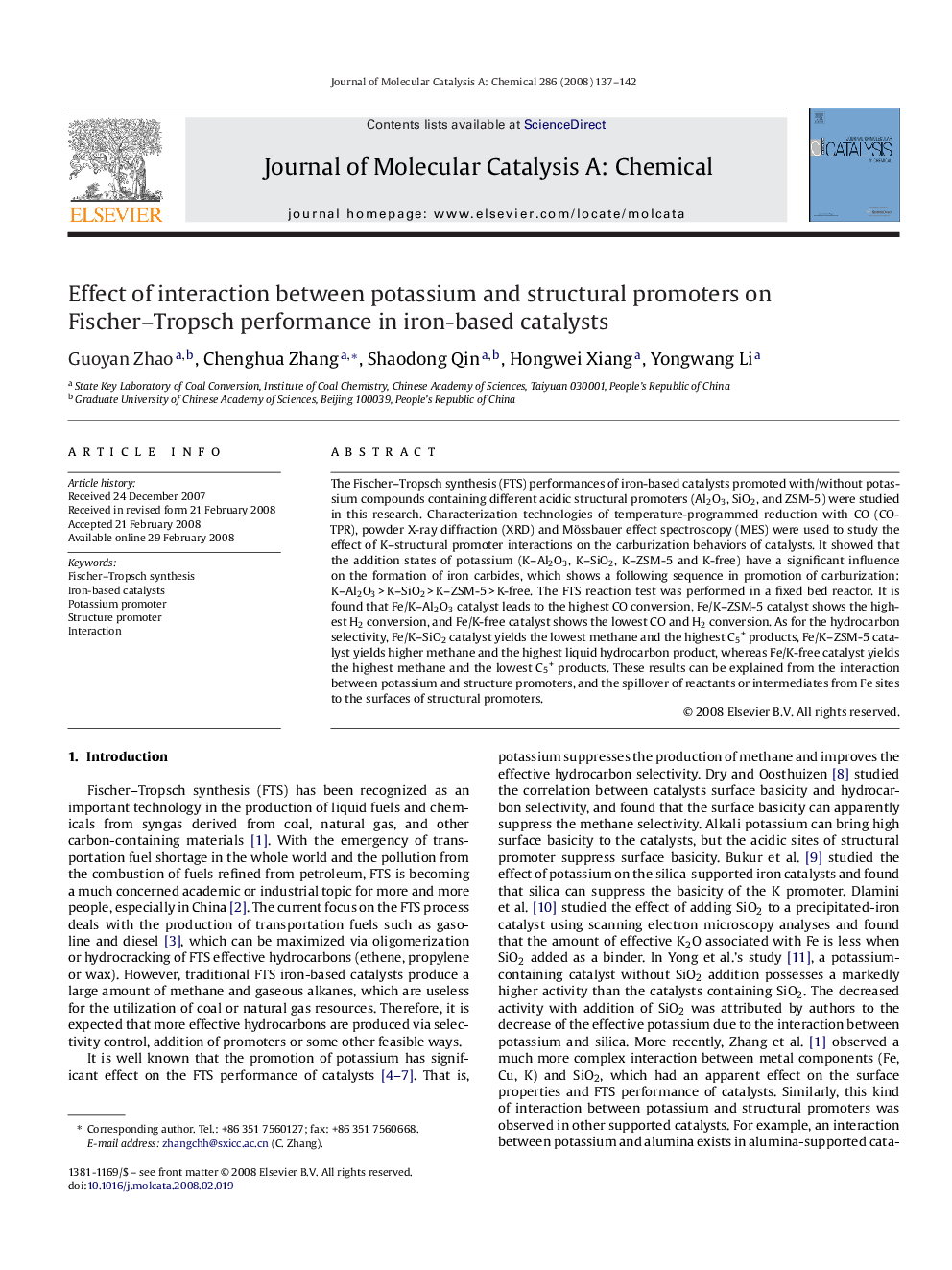| Article ID | Journal | Published Year | Pages | File Type |
|---|---|---|---|---|
| 67698 | Journal of Molecular Catalysis A: Chemical | 2008 | 6 Pages |
The Fischer–Tropsch synthesis (FTS) performances of iron-based catalysts promoted with/without potassium compounds containing different acidic structural promoters (Al2O3, SiO2, and ZSM-5) were studied in this research. Characterization technologies of temperature-programmed reduction with CO (CO-TPR), powder X-ray diffraction (XRD) and Mössbauer effect spectroscopy (MES) were used to study the effect of K–structural promoter interactions on the carburization behaviors of catalysts. It showed that the addition states of potassium (K–Al2O3, K–SiO2, K–ZSM-5 and K-free) have a significant influence on the formation of iron carbides, which shows a following sequence in promotion of carburization: K–Al2O3 > K–SiO2 > K–ZSM-5 > K-free. The FTS reaction test was performed in a fixed bed reactor. It is found that Fe/K–Al2O3 catalyst leads to the highest CO conversion, Fe/K–ZSM-5 catalyst shows the highest H2 conversion, and Fe/K-free catalyst shows the lowest CO and H2 conversion. As for the hydrocarbon selectivity, Fe/K–SiO2 catalyst yields the lowest methane and the highest C5+ products, Fe/K–ZSM-5 catalyst yields higher methane and the highest liquid hydrocarbon product, whereas Fe/K-free catalyst yields the highest methane and the lowest C5+ products. These results can be explained from the interaction between potassium and structure promoters, and the spillover of reactants or intermediates from Fe sites to the surfaces of structural promoters.
Graphical abstractThe Fischer–Tropsch synthesis (FTS) performances of iron-based catalysts promoted with/without potassium compounds containing different acidic structural promoters (Al2O3, SiO2, and ZSM-5) were studied in this research. The figure shows the effect of different potassium promoters on hydrocarbon selectivity and the results can be explained from the interaction between potassium and structure promoters, and the spillover of reactants or intermediates from Fe sites to the surfaces of structural promoters. Figure optionsDownload full-size imageDownload as PowerPoint slide
